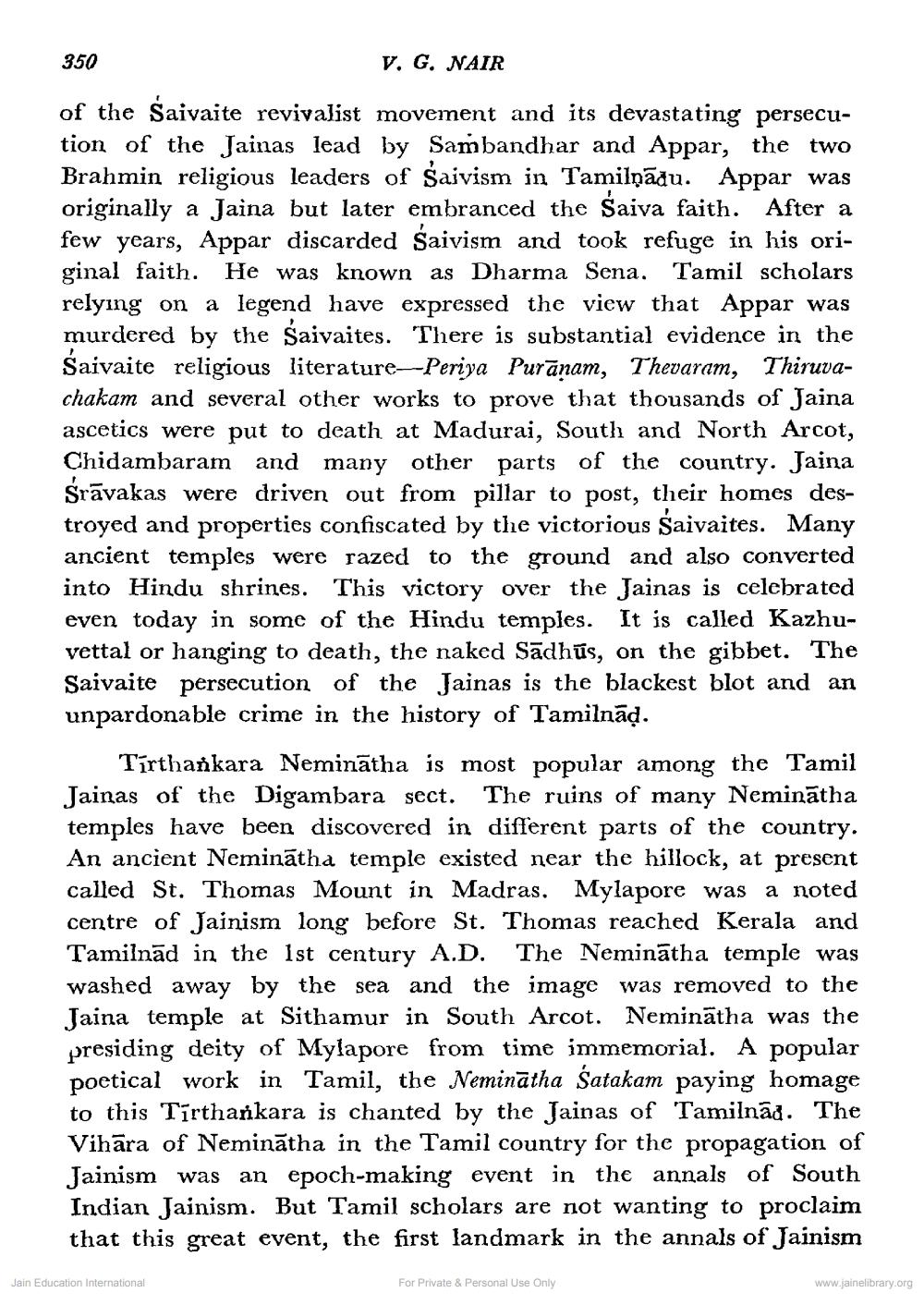________________
350
V. G. NAIR
of the Saivaite revivalist movement and its devastating persecution of the Jainas lead by Sambandhar and Appar, the two Brahmin religious leaders of Saivism in Tamilņādu. Appar was originally a Jaina but later embranced the Saiva faith. After a few years, Appar discarded Saivism and took refuge in his original faith. He was known as Dharma Sena. Tamil scholars relying on a legend have expressed the view that Appar was murdered by the Saivaites. There is substantial evidence in the Saivaite religious literature--Periya Purānam, Thevaram, Thiruvachakam and several other works to prove that thousands of Jaina ascetics were put to death at Madurai, South and North Arcot, Chidambaram and many other parts of the country. Jaina Srāvakas were driven out from pillar to post, their homes destroyed and properties confiscated by the victorious Saivaites. Many ancient temples were razed to the ground and also converted into Hindu shrines. This victory over the Jainas is celebrated even today in some of the Hindu temples. It is called Kazhuvettal or hanging to death, the naked Sadhus, on the gibbet. The Saivaite persecution of the Jainas is the blackest blot and an unpardonable crime in the history of Tamilnād.
Tirthařkara Neminātha is most popular among the Tamil Jainas of the Digambara sect. The ruins of many Neminātha temples have been discovered in different parts of the An ancient Neminātha temple existed near the hillock, at present called St. Thomas Mount in Madras. Mylapore was a noted centre of Jainism long before St. Thomas reached Kerala and Tamilnād in the 1st century A.D. The Neminātha temple was washed away by the sea and the image was removed to the Jaina temple at Sithamur in South Arcot. Neminātha was the presiding deity of Mylapore from time immemorial. A popular poetical work in Tamil, the Neminātha Satakam paying homage to this Tīrthankara is chanted by the Jainas of Tamilnad. The Vihāra of Neminātha in the Tamil country for the propagation of Jainism was an epoch-making event in the annals of South Indian Jainism. But Tamil scholars are not wanting to proclaim that this great event, the first landmark in the annals of Jainism
Jain Education International
For Private & Personal Use Only
www.jainelibrary.org




